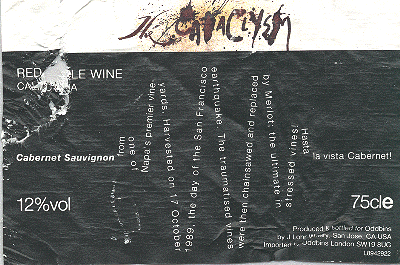Cabernet Sauvignon has a small tough skinned black berry that makes superb red wine everywhere it is grown.
It's home is northern France, around the town of Bordeaux and along the banks of the Gironde river. Cabernet Sauvignon is grown here for world famous and expensive wines such as Chateau Mouton-Rothschild and Chateau Latour. Most wines are blended from Cabernet Sauvignon, Merlot and Cabernet Franc. The amount of Cabernet Sauvignon usually comprises up to 90%.
The popularity of Bordeaux wines encouraged growers elsewhere to plant Cabernet Sauvignon. And Cabernet Sauvignon is a good traveler. It thrives in the New World where winemakers use Cabernet Sauvignon on its own. And the world loves them. In the early 1970s wine enthusiasts everywhere, and especially in France, were astounded when California Cabernet Sauvignons beat the best Bordeaux wines in blind tasting competitions.
Cabernet Sauvignon makes a dry wine with blackcurrant flavors and a cedar wood perfume. If you ever had a wooden pencil case at school, the smell you remember when opening that case is what you'll recognize in Cabernet Sauvignon. It is not an 'in your face' wine, rather it is restrained and elegant and can be austere - certainly a wine to savor and enjoy with food. It can mature, and wine made for keeping can be overly tannic when young.
From California to Bulgaria, Australia to Greece you'll find first rate Cabernet Sauvignon wines. It really is the king of the wine world.
Food Match: Lamb is the classic match. Try a roasted leg or grilled chops. But this fruity wine is a pleasure with most meals - I drink Cabernet Sauvignon with tandoori foods in my local Indian restaurant.
Try: Wolf Blass (Australia), Isla Negra (Argentina), Robert Mondavi (California), and any wine from Bordeaux's Pauillac appellation
If you have been, thanks for reading.

The final vintage - Cataclysm Cabernet Sauvignon label
© Copyright Peter May 2002.
peter@winelabels.org


